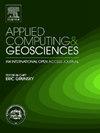一种深度学习物理信息神经网络(PINN),用于预测钻井轴向容量
IF 3.2
Q2 COMPUTER SCIENCE, INTERDISCIPLINARY APPLICATIONS
引用次数: 0
摘要
在岩土工程中,准确估计钻井竖井的轴向承载力一直是一个挑战,实测载荷测试结果与理论预测之间存在显著差异。为了弥补这一差距,提出了一种新的深度学习-物理-知情神经网络(DL-PINN)框架。采用Meyerhof承载力方程作为物理约束,将土壤和几何参数直接集成到其训练损失函数中。通过将这些第一性原理关系与经验数据相结合,该模型保留了基本的岩土力学机制,同时通过数据驱动和基于物理的损失分量之间的动态权重调整来提高预测精度。与标准人工神经网络(ANN)的对比实验,使用从加载到破坏的原位桩试验和随后的数值模拟中获得的数据集,表明尽管ANN可能获得更低的统计误差,但PINN对物理定律的遵守产生的预测更符合已建立的岩土力学行为。这种物理保真度和数据适应性之间的平衡可能会提名这些PINN框架来解决岩土工程应用中深度学习的“黑盒子”性质。本文还提出了未来的研究需要填补科学与实践的差距。本文章由计算机程序翻译,如有差异,请以英文原文为准。
A deep learning physics-informed neural network (PINN) for predicting drilled shaft axial capacity
Accurately estimating the axial capacity of drilled shafts remains a persistent challenge in geotechnical engineering, as evidenced by significant discrepancies between measured load-test results and theoretical predictions. To bridge this gap, a novel Deep Learning–Physics-Informed Neural Network (DL-PINN) framework is proposed. Employing Meyerhof's bearing capacity equations as a physics-based constraint, the developed PINN integrated soil and geometric parameters directly into its training loss function. By combining these first-principles relationships with empirical data, the model preserved fundamental geotechnical mechanisms while refining predictive accuracy through dynamic weight adjustments between data-driven and physics-based loss components. Comparative experiments with a standard artificial neural network (ANN), using a dataset derived from the loaded-to-failure in-situ pile test and subsequent numerical simulations, demonstrated that although the ANN may attain lower statistical errors, the PINN's adherence to physical laws yields predictions that better align with established geotechnical behavior. This balance between physics fidelity and data adaptability may nominate these PINN frameworks to address the “black box” nature of deep learning in geotechnical applications. The paper also suggested the future research needs to fulfill the scientific and practical gap.
求助全文
通过发布文献求助,成功后即可免费获取论文全文。
去求助
来源期刊

Applied Computing and Geosciences
Computer Science-General Computer Science
CiteScore
5.50
自引率
0.00%
发文量
23
审稿时长
5 weeks
 求助内容:
求助内容: 应助结果提醒方式:
应助结果提醒方式:


